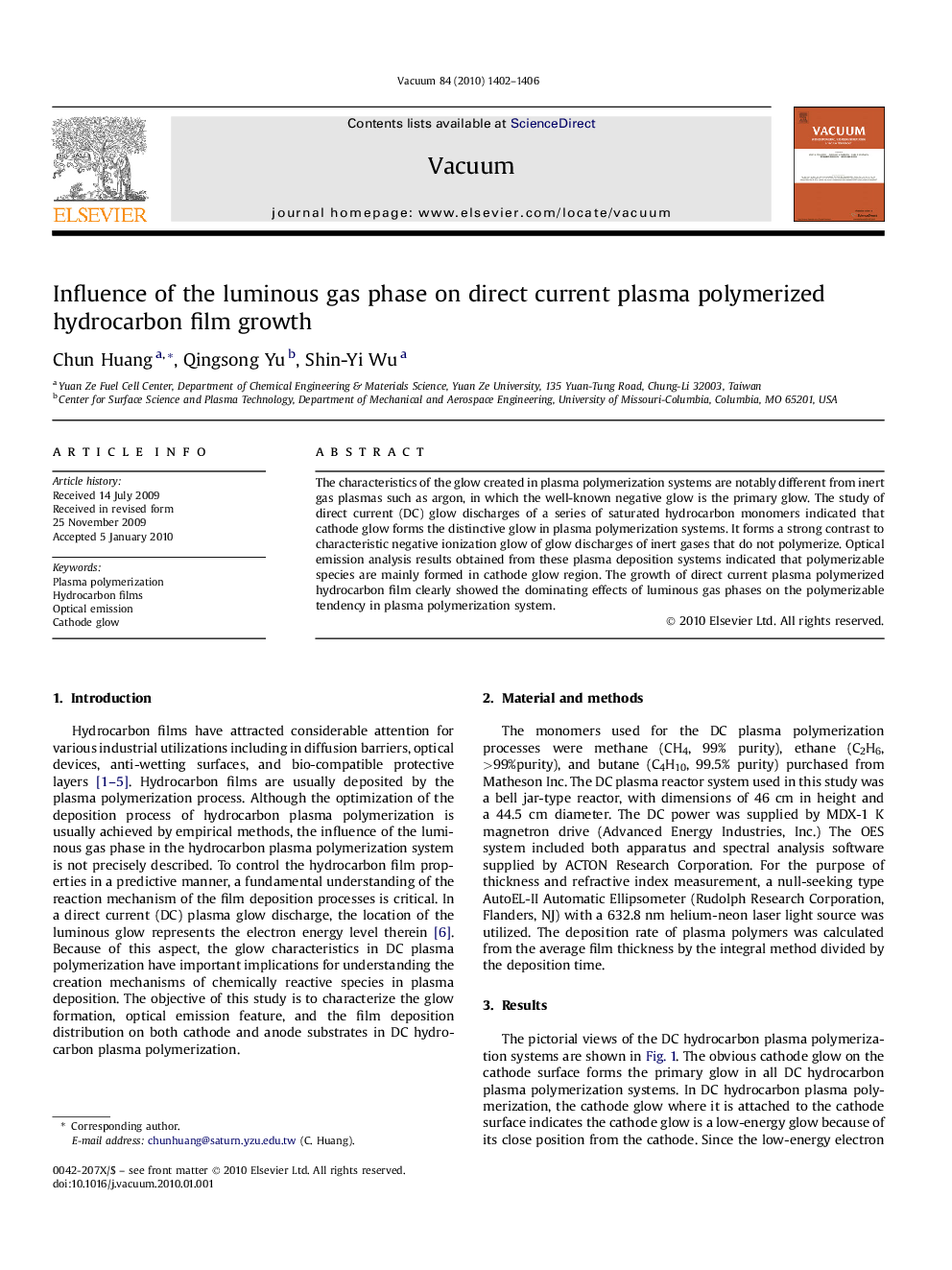| Article ID | Journal | Published Year | Pages | File Type |
|---|---|---|---|---|
| 1689188 | Vacuum | 2010 | 5 Pages |
Abstract
The characteristics of the glow created in plasma polymerization systems are notably different from inert gas plasmas such as argon, in which the well-known negative glow is the primary glow. The study of direct current (DC) glow discharges of a series of saturated hydrocarbon monomers indicated that cathode glow forms the distinctive glow in plasma polymerization systems. It forms a strong contrast to characteristic negative ionization glow of glow discharges of inert gases that do not polymerize. Optical emission analysis results obtained from these plasma deposition systems indicated that polymerizable species are mainly formed in cathode glow region. The growth of direct current plasma polymerized hydrocarbon film clearly showed the dominating effects of luminous gas phases on the polymerizable tendency in plasma polymerization system.
Related Topics
Physical Sciences and Engineering
Materials Science
Surfaces, Coatings and Films
Authors
Chun Huang, Qingsong Yu, Shin-Yi Wu,
